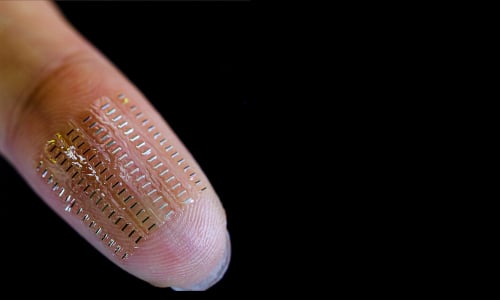A New Bio-Supercapacitor Designed To Be Used As A Tiny Biomedical Energy Source
A new tiny design of supercapacitor was designed to create an energy storage device that could power blood vessel sensors.
The bio-supercapacitor was designed to meet two properties that are essential for microelectronic biomedical sensors. The first is having an energy-efficient storage device within the sensor to allow the sensor to operate without the need for an external energy source. The other property is the compatibility of the sensor with the human body.
The research was conducted by a research team from the Chemnitz University of Technology, IFW Dresden, and IPF Dresden. The lead researcher is Oliver G. Schmidt, a Professor of Material Systems for Nanoelectronics at the Chemnitz University of Technology and the Director of the Institute for Integrative Nanoscience at the Leibniz Institute for Solid State and Materials Research (IFW) Dresden.
"The architecture of our nano-bio supercapacitors offers the first potential solution to one of the biggest challenges – tiny integrated energy storage devices that enable the self-sufficient operation of multifunctional microsystems," says Dr. Vineeth Kumar, a researcher in Prof. Schmidt's team and a research associate at the MAIN research center.

An array of 90 tubular nano-supercapacitors (nBSCs) on the fingertip enable the autarkic operation of sensors in blood. Image courtesy of the Chemnitz University of Technology
Bio-supercapacitor Characteristics
The researchers were able to reach new “scores” in developing the bio-supercapacitor. The researchers decreased the volume of their design to 1 nanoliter, which is equivalent to 0.001 mm^3. The bio-supercapacitor was designed in flexible tabular geometry, which can protect it from muscle contractions and blood pulsations without the need for a protection layer.
Moreover, the bio-supercapacitor delivers up to 1.6 volts to the microelectronic sensor and compensates for its self-discharge by using internal human body redox enzymatic reactions.
The researchers performed different tests on the bio-supercapacitor to ensure its biocompatibility. Some of these tests are blood clotting tests and cell viability tests, where eight samples were tested.
"It is extremely encouraging to see how new, extremely flexible, and adaptive microelectronics is making it into the miniaturized world of biological systems," said Prof Schmidt.
Design Implementation
The researchers used origami structure technology to assemble the bio-supercapacitor. Origami structure technology is expressed as layer systems that first transform into two-dimension layers and then the layers transform themselves into three ee dimensional layers. In this case, the materials used in the bio-supercapacitor are placed on a wafer-thin surface and compressed. Then after removing the tension the strain energy transforms these materials into three-dimensional devices.
After testing these devices in saline blood plasma and blood the results showed high-efficiency energy storage values. For example, in blood, after 16 hours, the initial capacity of the bio-supercapacitor was up to 70%.
The Sensor Technology
The researcher put the bio-supercapacitor into an application. They designed a sensor that uses the hydrogen potential fluctuations in the blood to make early tumor detection. This sensor was powered by the bio-supercapacitor design.
A ring oscillator was designed. Then a pH-sensitive bio-supercapacitor designed with the“Swiss-roll” Origami technique was integrated into it. Within there is a hollow core that acts as a blood flow channel. At last, three bios-supercapacitors were added in series. Therefore, creating an efficient, integrated energy storage and sensor.






